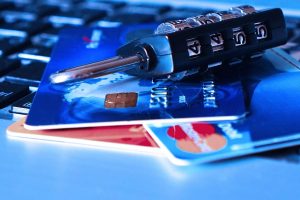It still makes sense to make various precautions (reading reviews, steering clear of sketchy sites, etc.), but that’s good advice for using the internet in general.
Given how much we buy online, it’s worth considering the risks inherent to e-commerce.
The arrival of the COVID-19 pandemic didn’t cause any damage to traditional retail that wasn’t already inevitable. Instead, it simply accelerated a well-established decline: stores throughout the world had been suffering from reduced foot traffic for years beforehand. The convenience of online retail is simply too great — and the prices too low — for there to be much competition.
Barring essential providers (those selling groceries, primarily), brick-and-mortar stores that had been struggling to stay in operation saw their options become starkly clear almost overnight. They could change with the times, or they could go out of business. Some accepted the latter, but most opted for the former, looking for ways to move their operations online.
Today, consumers are similarly bereft of options. Contending with myriad travel restrictions, they need to buy online if they buy at all. In some ways, it’s a great model: it’s flexible, accessible, and considerably more affordable. But does it also pose some risks? Now that e-commerce is firmly established as the global standard, it’s vital to determine this, and how to mitigate any risks that are present. Let’s consider just how dangerous it is to shop online in 2021.
Customer data can be leaked by hackers
You may have read about instances of big corporations suffering huge data leaks (UpGuard has an extensive list), with customer account details (and even financial details) being acquired and released by hackers. The prospect of having your details stolen is obviously concerning. Given the pace at which actions can be taken online, someone accessing your details could do a lot of damage very quickly.
The trickiest part here is that you ultimately have to trust the site through which you’re buying. If you’re just trying to protect your data during general internet use, you can do that with general security measures such as using a proxy server. But you can’t place an order without submitting your real details — and once they’re provided, you can’t control how securely they’re stored.
GDPR has ramped up levels of security
Implemented back in 2018, GDPR (the EU’s General Data Protection Regulation) has had a major impact throughout the online retail world. Now that internet users are more aware of the dangers, even businesses that don’t serve any EU customers have had to improve their security measures to remain competitive. This makes it significantly harder for leaks to occur.
Not only is less information being stored (to remain compliant, anything kept must be needed for a specific, timely and justifiable purpose), but there’s also more readiness to delete data upon request. This means that you can ask for your data to be removed and genuinely expect a prompt response (followed by similar-prompt action).
Throw in the ever-rising presence of valuable guides and resources created to educate people on how they can stay safe online, and you have an online landscape that continues to move away from the lawlessness and unpredictability of its formative years. Huge data leaks aren’t getting more common. They’re actually getting rarer.
Easy access can lead to mistakes being made
Efforts have been made to make it so much easier to buy things online. Systems like PayPal will stay signed in and allow one-click payments, and auto-fill systems can retain your details and automatically insert them when necessary. This is great in most situations, but it can go wrong. Firstly, there’s the possibility of social engineering. The easier it is to get into an account, the easier it is for someone to find a way to deduce (or brute-force) their own way in.
Secondly, shoppers can make mistakes while browsing — particularly kids. Parents (often those who don’t understand financial management) can leave their smartphones or tablets unlocked so their children can play games, only to discover weeks or even months later that they started buying things online because there was nothing to stop them. Having some kind of barrier to entry can be a good thing in certain circumstances.
Most transactions are strongly protected
That said, most transactions these days are heavily protected in many ways. Banks are fairly quick to spot fraud attempts, and payment gateways like PayPal pair their convenience with safeguards allowing fraudulent transactions to be canceled and associated funds to be recovered. This makes it safer than you might think to make online payments.

What’s more, this isn’t even exclusive to big business. The same protective solutions are available to all through cloud resellers: security suites such as Bitdefender get licensed and packaged by cloud solution distributors like intY, making them as accessible as Microsoft Office. (This also means that there’s no good excuse for having weak security.)
And while the threat of kids placing frivolous orders is still there, the solution is straightforward: a combination of good parenting and local device-based security. Most mobile devices now have fingerprint readers, so adding biometric authentication to every purchase will make it all but impossible for other users to place orders using your device.
On the whole, online shopping is safe
At this point, we must return to the titular question: how dangerous is shopping online in 2021? And though it’s possible to build a case that accentuates the risks, the clear conclusion is that it isn’t particularly dangerous at all — and not something that you need to worry about.
It still makes sense to make various precautions (reading reviews, steering clear of sketchy sites, etc.), but that’s good advice for using the internet in general. And if you proceed sensibly then it’s certainly no more dangerous than shopping offline. In fact, since the threat of someone swiping your wallet is gone, it’s probably safer. So rest assured: your buying is secured.


Join the conversation!